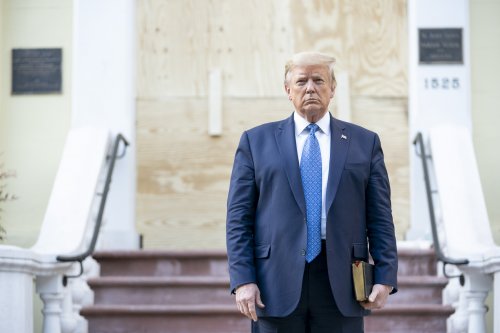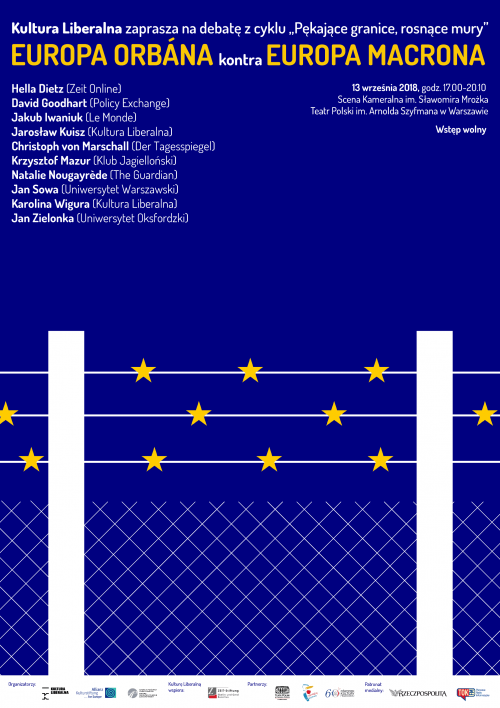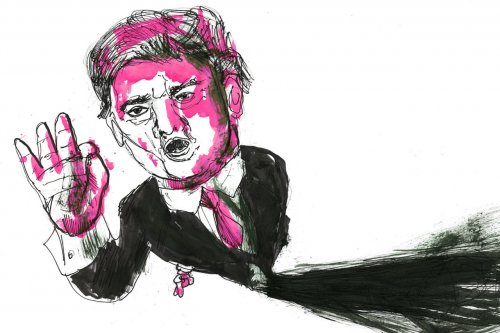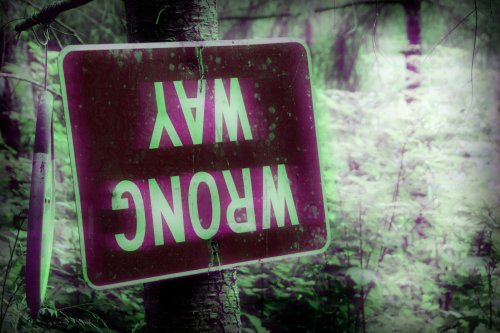Łukasz Pawłowski: In an article discussing last year’s protests you wrote we may be seeing an emergence of a new phenomenon which you called “the global street”. What do you mean by this term particularly when you say “the global street” is “rawer and less ritualized” than traditional Western public spaces such as boulevard or piazza?
Saskia Sassen: The public – not a particular public in the street but the public in general – can be constituted both by enacting ritualized practices and by making the new social and the new political. The street is a space where new forms of the social and the political can be made, rather than a space for enacting ritualized routines. With some conceptual stretching, we might say that politically “street and square” are marked differently from “boulevard and piazza”: the first signals action, and the second, ritual.
ŁP: Could you give an example of such public ritual?
SS: Something the Italians call passeggiata, a slow stroll through the main streets of a town during Sunday afternoon or weekday evening for which whole families dress up, go out and enjoy the ritualized presence of others. This is a traditional use of the public space. Crowd of people rushing to work on Monday morning is also such a ritualized practice. You may bump into somebody, step onto somebody’s foot and no offence will be taken. If the same happened during a walk in the park people’s reaction would be entirely different. The morning rush is governed by different rules than, let’s say, the passeggiata but is still highly predictable. These are both recurrent practices – every day people go to work and every weekend people go out to stroll along boulevards and alleys.
The other historical way of using the public space comes about when it becomes a space for making – making the social and political. The global street is such a place for making. The protests we observed last year in Arab countries, in Europe, in the United States and also in South America were not a part of ritualized use of public space, like Sunday strolls and weekday rush. It was not the piazza, it was the global street.
ŁP: Does it mean then that the piazza serves to uphold the social order and confirm our opinions about it – we go out for a family walk, see other people doing exactly the same and thus trust everything is in order – whereas the global street challenges it – we go out for a stroll in the park, see people in tents sleeping in it and thus are forced to ask what is going on? In other words, does the transformation from the ritualized public space to the global street come about by defying the existing social rules?
SS: To some extent yes, but you need to remember that defying the rules is not the aim in itself and is not sufficient condition for the global street to emerge. Many social actors defy the rules – mafia, hooligans, juvenile delinquents etc. What matters are the aims for which the rules are unsettled and the means by which this is done. Both elements were extraordinary in the last year’s protests. Whether in Egypt, the U.S., or elsewhere, it is important to note that the aim of the occupiers was not to grab power. Rather, they have been engaged in exposing deep flaws and wrongs in the political and social lives of their countries. As to the means, instead of traditional demonstrations we saw a new technique of opposition being applied and developed – occupation. Tahrir Square, los indignados, Occupy Wall Street, and others – made legible the fact that occupying makes novel territory, and thereby a bit of history, using what was previously considered merely ground. To occupy is to remake, even if temporarily, territory’s embedded and often deeply undemocratic logics of power, and to redefine the role of citizens, mostly weakened and fatigued after decades of growing inequality and injustice. Occupy takes a hard work – hour after hour, day after day, week after week you have to keep the place safe, you have to keep people engaged, you have to communicate with each other. This temporal dimension is what makes occupation specific and different from traditional demonstration. During this long-lasting process people develop new skills and capabilities. Let’s take the Occupy Wall Street as an example. When those people first got to the Zuccotti Park they did not know exactly what they were going to do – they learned through the process. I argue that in this process we can see the making of the social and the political.
ŁP: Do you think that the Occupy movement will have any lasting consequences now, when the occupiers have been evicted?
SS: I don’t know that and I believe this is a misguided question. What we observe is an attempt to come up with a new way of protesting and addressing political issues. As I said, the protesters are not trying to grab the power but tell us that the system is not working and that we should not accept it. This might be difficult to understand and maybe irritating. Even people from the “New Left” of the 1960’s and 1970’s – which by the way now becomes the “Old Left” – have problems with this new strategy and accuse the protesters of not having a clear program. They are missing the point. The occupiers have a very simple politics – there’s too much inequality in this country and to reduce it we should make the richest citizens pay their fair share – and they have already made a very significant contribution to the public debate. Opinion polls conducted after the Occupation show that the majority of respondents agree there is too much inequality in the United States. This never happened in this country before.
ŁP: Does it mean that the Occupy movement has become a powerful force in the American political life?
SS: Not necessarily – we don’t know that yet. You see, I believe that not only the powerful can make history. You can achieve a significant change and still remain powerless. Powerlessness is not simply the absence of power. Under certain conditions powerlessness can become complex by which I mean that it contains the possibility of making the political, or making the civic, or making history – there is a difference between powerlessness and invisibility or impotence. Middle East and North Africa are a case in point: these protesters may not have gained power; they are still powerless, but they are making a history and a politics. In my work I try to challenge the popular notion according to which if anything good happens to the powerless it necessarily renders them more empowered.
ŁP: Another unique characteristic of your work is your opposition to the strict distinction between the national and the global, which is still prevalent in the international relations as an academic domain. You claim that these two should not be seen as oppositions in the sense that what is more global is necessarily less national and vice versa. Could you explain your argument in a more detail and, if possible, apply this framework of analysis to the last year’s protests?
SS: As to the distinction between the national and the global, in my research I try to show that the global – whether an institution, a process, a discursive practice, or an imaginary concept –both transcends the exclusive framing of national states, and also partly emerges and operates within that framing. Seen this way, globalization is more than growing interdependence and formation of self-evidently global institutions. It also includes sub-national spaces, processes, and actors. What we have seen for many years now is an outstanding proliferation of partial, often highly specialized, global assemblages of bits of territory, authority and rights once firmly ensconced in national institutional frames. These assemblages cut across the binary of “national vs. global”. Let me give you an example: there is no such legal persona as a global firm. Nonetheless we know there are 370 000 firms that conduct themselves as if they were global because in many countries in the world they find a comparable mix of elements that allows them to do business in a similar way. How was this similar space created? It was created by each of the states which used their own particular instruments – parliamentary bills, executive decisions, court statements – and thus produced a set of conditions allowing these firms to function in an analogous manner all over the world. Such firms are this new type of assemblages. They use bits and pieces of multiple national territories, yet are neither confined to one nation-state nor entirely independent from the nation-states. In fact they would not be able to function without nation-states.
ŁP: There are, however, institutions global by their very status, like the World Trade Organization or the International Monetary Fund…
SS: Much of the literature on globalization focus on these institutions but in my view they should be seen more as bridging entities for an epochal transformation, rather than as the transformation itself. No matter how masterly they appear to be, they are merely foot soldiers. These institutions should rather be conceived of as powerful capabilities for the making of a new order: instruments, not the new order itself. What is more, in my view they have already done their job and do not matter any longer, but I know many of my colleagues disagree with me.
ŁP: Let’s get back to the last year’s protests – are they neither national nor global phenomena?
SS: These protests are a beautiful example of phenomena that are neither fully national nor fully global. The occupy movements around the world consist of fragments of various national and global territories. Their reclamation of public space is also a response to the increasingly palpable insufficiency of the logic of the nation-state. This emergent condition – which is closely associated with the paradigm of the “global street” – has freed up territory both as category and as capability; it has turned it into a space for the remaking of the social and the political by those who lack access to the established instruments of power within the frame of national sovereign territory. This is why the encampments in Cairo, New York, and all the other sites are a critical element within deeper shifts that unsettle the national territorialization of the building blocks of social and political life. On the one hand these protests were much localized – the protesters occupied very specific real spaces – on the other they had a global megaphone effect. I believe this format of protest is the format of the future. It is centered in very thick localities, with very material practices and then it has the global dimension, to large extent created by the social media. In fact, quite often many of these protests were referred to as “Facebook revolutions” or “Twitter revolutions” in order to underscore the crucial role social media played in them. This is true, although we should not forget that the media and technology, no matter how advanced, are only tools and cannot guarantee success. I remember that back in the 1990’s and early 2000’s it was widely believed that new communication technologies will entirely change the logic of social protest and that instead of getting people out on the streets it will be sufficient to get them in front of their computers. This proved to be false. There is a kind of popular dimension in politics that cannot be replaced by technology. It is striking that in the digital era the notion of mass protests or mass occupation becomes one of the most important strategic elements of protests.
ŁP: What does the fact that all of those protests happened in big cities tell us about the contemporary world? In one of your articles you wrote: “The global street is emphatically an urban street, not a suburban or rural road”. What role did the cities play in what happened last year and is still happening?
SS: When a protest happens in a city it gains visibility that it would not have if it happened somewhere in the rural area. Let’s assume we have 300 undocumented, illegal workers protesting against the working conditions on a farm in California. The employer threatens to call the immigration police, if they don’t call off their strike. What will they do? Probably yield and go back to work. The very same 300 people in the city would be bolder as there they would become a little multitude. I emphasize that “they” be the same people because this change depends not on individuals but on the space they live in. The city appears to be a sort of a weak regime that nonetheless can protect. Killing civilians in a city is a different type of horror from killing people – far more people – in the jungle and in villages. In that sense, the urbanizing of war points to the limits of great powers. They can engage in all kinds of activities, including violations of the law: rendition, torture, assassinations of leaders they don’t like, excessive bombing of civilian areas, and so on. But superior military powers stop on this side from pulverizing a city, even when they have the weapons to do so. The U.S. could have pulverized Baghdad and Israel could have pulverized Gaza. But they didn’t. It seems to me that the reason was not respect for life or the fact that the intentional killing of civilians is illegal according to international law – they break it all the time. Rather, I would posit that pulverizing a city is a specific type of crime, one which causes a horror that people dying from malaria do not. I’m not saying that death does not belong to the city. Everyday people die in cities because of crimes, accidents or naturally. Yet there is a kind of death that does not belong to the city. The mix of people and buildings has the capacity to temper destruction, not to stop it, but to temper it. What would go unnoticed in a village matters in a city.
ŁP: However, these differences in the intensity of death and terror might also be explained in cultural and political terms. 10 protesters killed by the police here in New York would be something unimaginable. On the other hand there were weeks last year when dozens of Egyptian protesters were killed almost every day. In Syria it has been happening to this day. All these protests took place in cities and yet there are enormous differences in the level of brutality which accompanied them…
SS: I agree there are significant differences, yet please note that the deaths in Syria or earlier in Egypt have caused much horror and outrage around the world. In the meantime, the deaths that are happening in, let’s say, South Sudan where over a weekend more than 300 people were killed go virtually unnoticed. The same applies to the wars in Ethiopia, Eritrea, Somalia or Congo. All those deaths do not catch our attention. At this point you might say it is because the media are not present in those zones. They are usually based in urban areas and thus it is not the city but the media in the city that limit the violence. I think there is something more to that. City in itself is a space that does not belong to the zone of war.
ŁP: So far we spoke about last year’s events as though they were elements of the same, larger whole. However, despite many similarities and despite the fact that the media tried to present those protests as parts of one phenomenon (by for example speaking of the Arab Spring, Mediterranean Summer, American Fall and Russian Winter) there were nonetheless many differences between them. The most important discrepancies concerned their particular objectives. People in the Arab countries or in Russia were fighting for precisely the same parliamentarian, liberal democracies people in the West were protesting against…
SS: In my opinion the differences you mentioned are only superficial. I believe that movements both in democratic and undemocratic countries want social justice. Furthermore, the protesters in the West do not reject liberal democracy – their goal is to improve it by reducing inequalities and broadening the possibilities of participation. And in this struggle they are right. I also don’t think that we have a working democracy in the West. Apart from many regrettable facts of which we are all aware – as diminishing electoral turnouts or very low general interest in politics among citizens – there is also a larger and very disconcerting trend that I have observed in the so-called democratic world, namely the ongoing decline in significance of the legislative power, i.e. the branch of democratic government the closest to the citizens. I describe it in more detail in my book “Territory, Authority, Rights: From Medieval to Global Assemblages”. Here I can only say that the kind of globalization that we have had, which is a corporate driven globalization, has reallocated power. It is not that the globalization has reduced the power of the state – the state is far too broad category. In my view we need to decompose it and look inside. Then we will see a fresh type of segmentation occurring inside the state apparatus, characterized by a growing and increasingly privatized executive branch of government aligned with specific international actors, alongside a dwindling legislature whose effectiveness is at risk of becoming confined to fewer – and more domestic – matters. A weak and domesticated legislature weakens the political capacity of citizens to demand accountability from an increasingly powerful and private executive, since the legislature gives citizens stronger standing in these matters than the executive. Further, the privatizing of the executive partly brings with it an eroding of the privacy rights of citizens. You can see it in Britain, France and certainly in the United States.







